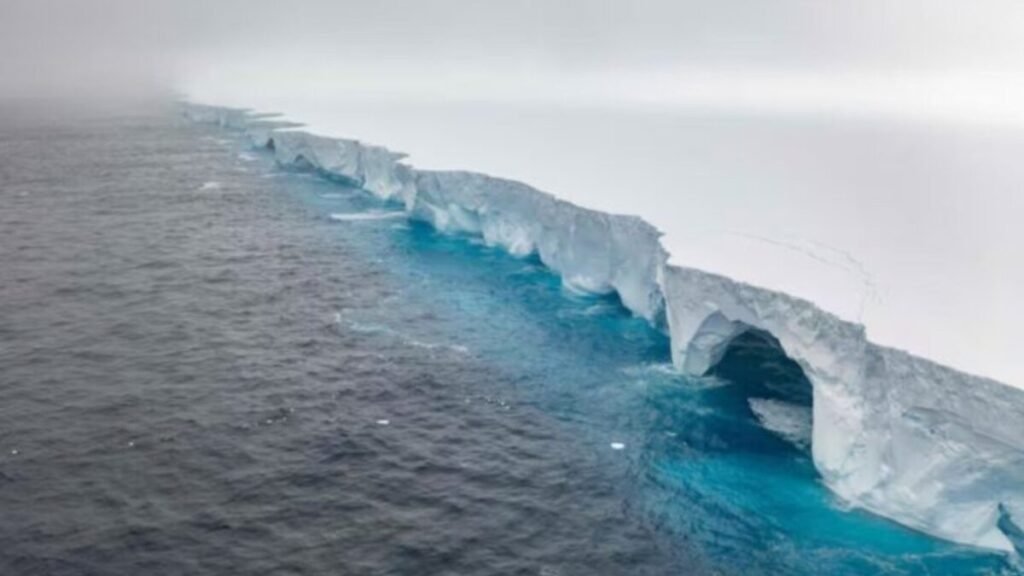English Title: The icy giant A-23A starts to disintegrate and issues a warning to the planet

For years, the massive iceberg A-23A has quietly drifted through the South Atlantic, showcasing the forces of nature. However, its recent visible disintegration from space is causing concerns not only for navigation but also for the potential environmental impact on the region.
A Declining Giant off the Coast of South Georgia
Pieces of the iceberg, which broke off from the Filchner Ice Shelf in 1986, have lost over 360 square kilometers between March and May 2025. These ice fragments now float in the region, creating a hazardous ice belt that poses a threat to maritime routes and local wildlife. This unfolding scenario takes place in one of the Southern Hemisphere’s most significant marine sanctuaries, where any disturbance can have ripple effects throughout the food chain.
Satellites’ Gaze on a Colossus in Crisis
International organizations like NASA, USNIC, and ESA have mobilized their technological resources to closely monitor the movements of the iceberg. Satellites such as Sentinel-1 are providing precise images even under extreme conditions. Experts caution that the remnants of this colossal iceberg could potentially disrupt the ocean’s salinity and temperature, leading to disturbances in crucial biological processes.
Environmental Consequences and a Global Message
The disintegration of the iceberg is already impacting the feeding patterns of species like king penguins, elephant seals, and seals, forcing them to travel farther in search of food. While the release of nutrients may benefit phytoplankton, the long-term consequences remain uncertain. Researchers emphasize that climate change is accelerating the appearance and decay of these colossal icebergs, highlighting that events in the Antarctic periphery can have far-reaching effects on the planet’s balance.






